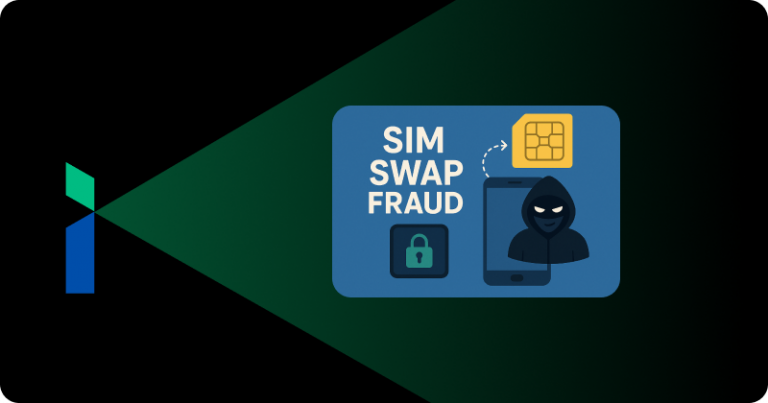Introduction
Imagine the varied struggles and inconveniences caused during loan applications; submitting heaps of documents comprising identity and address proofs, the tiresome physical visits to the bank and the inconvenient costs incurred by those visits, the looming threat of losing crucial documents while in transit, the exhausting list of formalities, and then waiting for eons to get the loan you wanted. This process is now clearly a thing of the past.
Today, you can open any financial app on your cell phone, authenticate yourself without providing a single shred of paper or having any correspondence with the bank, and get the product you wanted in a few minutes. How is that possible? How can your details be verified so instantly? Among many checks we do, in this blog we will highlight the Penny Drop Verification/ Bank Account Verification check.
Penny Drop check has a considerable role in this massive shift to paperless and presence-less financing and will continue to shoulder this critical responsibility.
We often receive queries like this for Penny Drop Verification:
Got one rupee in your account from our company? Wondering where we got your bank account details from? Is this legal? Read on, we have all your questions answered below!
What is Penny Drop verification?
In the Penny Drop verification, the authenticity of the bank’s account is determined and verified by initiating a “test transaction” of depositing a penny, hence the name Penny Drop, in the Indian context, a rupee in the beneficiary’s account. The authenticity of the beneficiary, i.e., bank account and user’s name, is validated based on Penny Drop verification feedback.
Penny Drop verification is an ingenious way of e-KYC, where the beneficiary details are validated without sharing a single piece of paper and without any obligation of being physically present for KYC.
The reasons for the failure of Penny Drop verification can be incorrect account number, wrong account type, invalid IFSC code, mismatch in name, dormant or frozen account due to inactivity, or non-payment of dues.
Where is Penny Drop verification used?
The RBI took a revolutionary step in fostering digital innovation in December 2016 when it acquiesced and enabled paperless and presence-less delivery of unsecured loans up to Rs 60000 through the ubiquitous cellphone.
On 24th April 2020, SEBI came up with standardized norms for Digital KYC, which permitted that the bank account verification can be done by the Penny Drop mechanism where a negligible amount of Re 1 is deducted from the applicant’s bank account.
Pension regulator PFRDA via a circular on 20th July 2021, announced a facility of instant bank verification through the Penny Drop mechanism to safeguard the interest of the pensioners and for timely credit of money in the subscriber’s account.
Based on the observation by the pension regulator, the amount eligible to the subscriber cannot be credited to the savings account due to varied reasons. And the amount remained with the Trustee bank till the correct account number is conveyed. Hence the Penny Drop verification enabled validating the bank account details provided by the pensioner before the actual amount is credited to his savings account.
How does Penny Drop work?
Low operational expenditures and overheads for the business
The largest brokers in India open more than 15000 accounts per day. Just imagine the massive amount of time and money required to physically verify those 15000 individuals and their avalanche of documents. A Penny Drop mechanism saves a gargantuan sum of money.
It does away with the enormous amount of human resources needed to physically verify the applicant as the Penny Drop verification merely requires your bank account number and IFSC code, and the mechanism matches the name and the bank account details provided by the Penny Drop response, with the details provided in the KYC documents.
The Penny Drop verification method also facilitates OTP-based e-KYC, enabling new investors to complete the KYC process seamlessly and digitally with OTP provided through Aadhar authentication.
This means no need to make endless visits to the bank; in the case of bank officials no need for the innumerable visits to the beneficiary/investor’s residence under doorstep banking. This saves a ginormous amount of costs spent hiring human resources to facilitate the traditional KYC process.
Additionally, this saves costs incurred to build facilities to store these documents and other operational expenses. It is estimated that the costs of e-KYC verification amount to Rs 15 per person against Rs 100 per person for physical KYC. You can already imagine the amount of tremendous savings through the adoption of Penny Drop verification.
Theft reduction
OTP-based e-KYC has one major pitfall. If someone’s phone or sim card is stolen, the impostor can assume the identity of the beneficiary or investor while conducting the e-KYC via OTP authentication.
However, this discrepancy is avoided with the Penny Drop mechanism as the impostor stealing the sim card, or phone would not be privy to the banking transaction ID and password required to complete the Penny Drop verification or the other surrogate questions like employment, tax verification to validate the identity.
The overbearing majority of Penny Drop verification is undertaken by financial institutions, particularly those lending to businesses and consumers. The lender can verify the KYC proofs with the borrower’s details reverted as part of the Penny Drop verification.
This helps to plug identity thefts and frauds where the loan is applied on synthetic and stolen identity, and the bank account belongs to the fraudster. Hence the Penny Drop verification can avoid significant losses due to identity theft or theft of phones and sim cards.
More convenient to the customers
OTP e-KYC and Penny Drop mechanism, as mentioned above, saves countless trips to the bank. It also does away with the humongous amount of documents needed to be searched and provided in traditional KYC. Also, the customer does not have to wait for ages to get the loan he wants. It’s credited to his account in mere minutes.
According to a World Bank report on identification systems, “The more arduous the verification process, the more likely customers are to abandon the transaction, either in favour of a more user-friendly experience or by foregoing the service entirely.”
Hence with OTP e-KYC and Penny Drop verification, the customer is more likely to take the loan or open that Demat account due to the absence of inconvenience caused to him.
Wider reach
Your ability to procure loans or open the DEMAT account may be restrained to having a branch in your locality. With OTP-based e-KYC and Penny Drop, you can reach the country’s farthest reaches as the entire process is conducted by the mesmerising device in your palm – the cellphone.
Today more and more Indians are using smartphones to access services and goods. With the widespread and ever-increasing usage of smartphones, the Penny Drop verification opens pathways to include more and more individuals under the ambit of banking and thereby achieve the nation’s resolve of financial inclusion.
Is it legal for Perfios to do a Penny Drop Verification?
Perfios works as a verification agency on behalf of multiple banks, insurers, etc. As a part of verification of the bank account details shared by a customer with one of our clients (Banks/NBFCs/ Payment Firms), we would have transferred INR 1.00 to the customer’s account to confirm that the account belongs to the customer and is an active account.
We do not store any of the client’s sensitive information hence we can not immediately confirm which client had requested for verification. If any customer wishes to know which of our clients initiated the penny drop request, then they can share their RRN (IMPS Ref number) and the date and exact time they received INR 1.00 from Perfios’ end.
Once shared, we can confirm which of our clients initiated this request within 48 hours. With 100% assurance, we can state that any penny drop verification is done only with the consent of our clients and is for verification purposes only.
Conclusion
We are already striving for paperless finance, and some parts of the country are making strides into virtual finance with Penny Drop verification as the launchpad. To achieve the national goal of financial inclusion, penny drop verification needs to be implemented to bring all segments of society under the financial ambit.
As a result of the widespread penetration of smartphones, this has become possible. A smartphone is all you need to conduct e-KYC verification through the penny drop mechanism, eliminating the need for physical banking presence throughout the country.
There is a terrific buzz among fintech firms and banks to make paperless and virtual financial accessible across India. We are confident that the next wave of fintech will be turbocharged by instant offline KYC verifications like Penny Drops.














